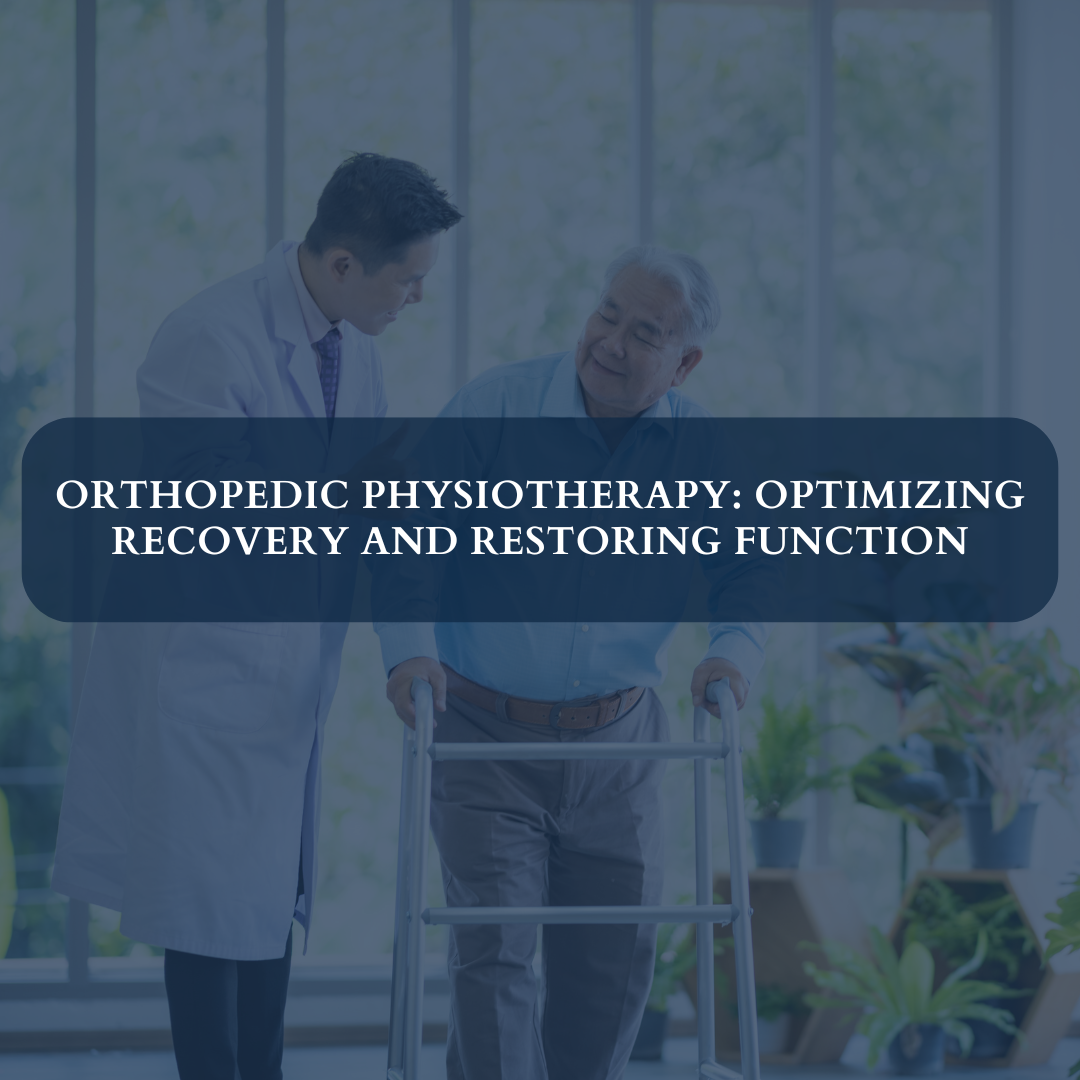Orthopaedic physiotherapy is a specialized branch of physical therapy that focuses on the treatment of musculoskeletal disorders and injuries. Whether you’re recovering from a sports injury, dealing with chronic pain, or rehabilitating after surgery, it can play a crucial role in your recovery journey. In this comprehensive guide, we’ll delve into everything you need to know about it, from its benefits to the techniques used by physiotherapists.
Understanding Orthopaedic Physiotherapy
Orthopaedic physiotherapy primarily deals with conditions affecting the musculoskeletal system, which includes bones, muscles, ligaments, tendons, and joints. These conditions can result from various factors such as injuries, accidents, aging, or underlying health conditions. The goal of orthopaedic physiotherapy is to restore mobility, reduce pain, and improve overall function, thereby enhancing the patient’s quality of life.
Benefits of Orthopaedic Physiotherapy
1. Pain Management
One of the primary benefits of orthopaedic physiotherapy is pain management. Through targeted exercises, manual therapy techniques, and modalities such as heat and cold therapy, physiotherapists help alleviate pain associated with musculoskeletal conditions. By addressing the root cause of the pain, patients can experience long-term relief and improved comfort.
2. Improved Mobility and Function
Orthopaedic physiotherapy aims to enhance mobility and function in patients with musculoskeletal disorders. Through tailored exercise programs and hands-on techniques, physiotherapists work to restore range of motion, strength, and flexibility, enabling patients to perform daily activities with greater ease and efficiency.
3. Faster Recovery from Injuries and Surgeries
For individuals recovering from injuries or surgeries, it plays a crucial role in speeding up the recovery process. By implementing specialized rehabilitation programs, physiotherapists help patients regain strength, coordination, and function, allowing them to return to their normal activities sooner than expected.
4. Prevention of Future Injuries
Orthopaedic physiotherapy not only focuses on treating existing injuries but also on preventing future ones. By educating patients about proper body mechanics, ergonomics, and exercise techniques, physiotherapists empower individuals to reduce the risk of injury and maintain optimal musculoskeletal health in the long run.
Conditions Treated with Orthopedic Physical Therapy
Orthopedic physical therapy caters to a wide array of conditions, including but not limited to:
- Muscle Strains and Sprains: Common injuries affecting muscles and ligaments.
- Joint Pain and Arthritis: Conditions causing discomfort and inflammation in joints.
- Post-Surgical Rehabilitation: Vital for optimizing recovery following orthopedic surgeries.
- Back and Neck Pain: Addressing issues stemming from spinal problems.
- Sports Injuries: Rehabilitating athletes back to peak performance safely.
- Fractures and Dislocations: Assisting in regaining mobility post-injury.
- Tendonitis and Bursitis: Managing inflammation of tendons and bursae.
- Osteoporosis: Promoting bone health and minimizing fracture risk.
- Overuse Injuries: Preventing and treating injuries caused by repetitive motions.
- Degenerative Conditions: Such as degenerative disc disease or osteoarthritis.
Techniques Used in Orthopaedic Physiotherapy
1. Exercise Therapy
Exercise therapy forms the cornerstone of orthopaedic physiotherapy. Physiotherapists prescribe specific exercises tailored to each patient’s needs and goals. These exercises may include stretching, strengthening, balance training, and functional movements aimed at improving mobility, stability, and muscle function.
2. Manual Therapy
Manual therapy techniques, such as joint mobilization, soft tissue mobilization, and manipulation, are commonly used in it to address musculoskeletal dysfunction. By applying hands-on pressure and manipulation to affected areas, physiotherapists can relieve pain, restore joint mobility, and improve tissue flexibility.
3. Modalities
Modalities such as heat therapy, cold therapy, ultrasound, electrical stimulation, and traction are often utilized in orthopaedic physiotherapy to complement other treatment modalities. These modalities help reduce pain, inflammation, and muscle spasms, facilitating the healing process and enhancing treatment outcomes.
Also Read:
Breaking Down Barriers: How Orthopedic Physiotherapy Is Redefining Rehabilitation
Conclusion
Orthopaedic physiotherapy is a highly effective approach for managing musculoskeletal conditions and injuries. By addressing pain, improving mobility, and enhancing function, physiotherapists play a crucial role in helping patients recover and regain their quality of life. Whether you’re recovering from an injury, managing chronic pain, or seeking to prevent future injuries, it can provide personalized care and support tailored to your individual needs. If you’re experiencing musculoskeletal issues, consider consulting a qualified physiotherapist to explore the benefits of it and start your journey towards better health and wellness.
Ready to explore your options for chiropractic and physiotherapy? Contact SwastyaPhysio today to schedule a consultation and discover the best path to your wellness journey. We’re here to support your health every step of the way.
Banaswadi | HBR layout | Kalyan Nagar | Kammanahalli | Horamavu | Hennur





